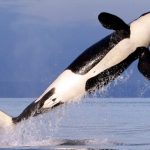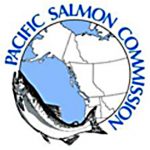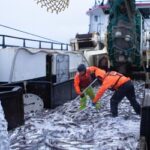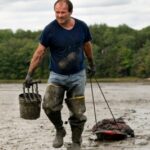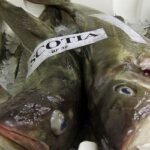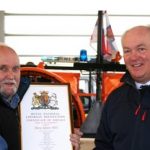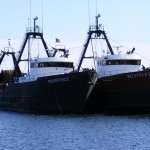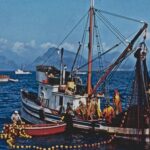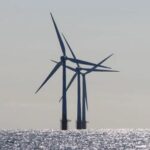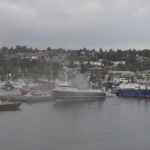Daily Archives: November 7, 2016
The Prime Minister of Canada announces the National Oceans Protection Plan

Cape Sharp Tidal installs first of two 2MW turbines in Minas Passage
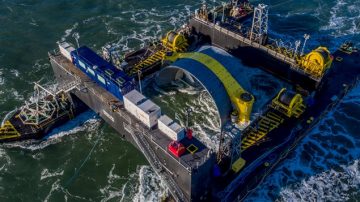 Several months after receiving approval from Nova Scotia’s Department of Environment to deploy two 16-metre, 1,000 tonne turbines in the Bay of Fundy’s Minas Passage, Cape Sharp Tidal has finally submerged the first of the OpenHydro Open-Centre 2MW turbines at the Fundy Ocean Research Centre for Energy (FORCE), near Parrsboro. Cape Sharp Tidal plans to connect the turbine to the power grid in the coming days via FORCE’s subsea cable, which during the next several weeks will deliver Nova Scotia’s first in-stream tidal energy to the province’s power grid. The turbine was towed on a barge from West Bay to the FORCE site on Monday morning, and then lowered to the sea floor in a four-hour operation during an ebb tide. The deployment follows months of delay for environmental review and an injunction request filed by the Bay of Fundy Inshore Fishermen’s Association, challenging the approval of Nova Scotia’s Environment Minister over concerns regarding the project’s possible impacts on sealife. Read the story here 18:24
Several months after receiving approval from Nova Scotia’s Department of Environment to deploy two 16-metre, 1,000 tonne turbines in the Bay of Fundy’s Minas Passage, Cape Sharp Tidal has finally submerged the first of the OpenHydro Open-Centre 2MW turbines at the Fundy Ocean Research Centre for Energy (FORCE), near Parrsboro. Cape Sharp Tidal plans to connect the turbine to the power grid in the coming days via FORCE’s subsea cable, which during the next several weeks will deliver Nova Scotia’s first in-stream tidal energy to the province’s power grid. The turbine was towed on a barge from West Bay to the FORCE site on Monday morning, and then lowered to the sea floor in a four-hour operation during an ebb tide. The deployment follows months of delay for environmental review and an injunction request filed by the Bay of Fundy Inshore Fishermen’s Association, challenging the approval of Nova Scotia’s Environment Minister over concerns regarding the project’s possible impacts on sealife. Read the story here 18:24
Rio Grande Valley Shrimpers Battle For Profits
 It’s been a while since shrimpers from the Rio Grande Valley have seen a poor shrimp season. The Texas shrimp season just started 4 months ago. Andrea Hance is a shrimper who says, “A lot of the boats right now are having to go all across the gulf to find the areas where the shrimp are.” This season Hance says their production is down 40%. The decrease in production along with the increase in competition from foreign farm raised shrimp is taking a toll on the industry. Hance says foreign import shrimp sellers under cut local shrimpers by about 20% which makes Valley shrimpers lose out on business to restaurants who want a cheaper product. A lot of boats are going short handed. Video, read the rest here 16:05
It’s been a while since shrimpers from the Rio Grande Valley have seen a poor shrimp season. The Texas shrimp season just started 4 months ago. Andrea Hance is a shrimper who says, “A lot of the boats right now are having to go all across the gulf to find the areas where the shrimp are.” This season Hance says their production is down 40%. The decrease in production along with the increase in competition from foreign farm raised shrimp is taking a toll on the industry. Hance says foreign import shrimp sellers under cut local shrimpers by about 20% which makes Valley shrimpers lose out on business to restaurants who want a cheaper product. A lot of boats are going short handed. Video, read the rest here 16:05
FISH-NL leaders on tour, 15 formal meetings scheduled
 The Federation of Independent Sea Harvesters of Newfoundland and Labrador (FISH NL) will begin the first leg of a provincial tour this week, with dozens of stops in Labrador, the Great Northern Peninsula, and western Newfoundland. “We have 15 formal meetings scheduled with fish harvesters from Port Hope Simpson, Labrador to Burgeo, Newfoundland, but we’ll be looking to meet fish harvesters wherever they gather — on the wharves or stages, in their kitchens and community halls,” says Ryan Cleary, president of FISH-NL, who will lead the tour. FISH-NL’s membership drive began on Nov. 1, with more than 9,000 cards distributed to date around Newfoundland and Labrador by roughly 100 volunteers. The membership drive will distribute and collect cards, as well as hear from fish harvesters on their concerns. “There’s an electricity today in Newfoundland and Labrador, a stirring on the wharves and stages, in the coves and harbours that hasn’t been felt in modern times,” says Cleary. “Fish harvesters are taking a last stand for a fishing industry that has been brutalized by decades of failed management and poor leadership. The salt and pepper revolution is a fight for NL’s most endangered species — fishermen and women.” 13:47
The Federation of Independent Sea Harvesters of Newfoundland and Labrador (FISH NL) will begin the first leg of a provincial tour this week, with dozens of stops in Labrador, the Great Northern Peninsula, and western Newfoundland. “We have 15 formal meetings scheduled with fish harvesters from Port Hope Simpson, Labrador to Burgeo, Newfoundland, but we’ll be looking to meet fish harvesters wherever they gather — on the wharves or stages, in their kitchens and community halls,” says Ryan Cleary, president of FISH-NL, who will lead the tour. FISH-NL’s membership drive began on Nov. 1, with more than 9,000 cards distributed to date around Newfoundland and Labrador by roughly 100 volunteers. The membership drive will distribute and collect cards, as well as hear from fish harvesters on their concerns. “There’s an electricity today in Newfoundland and Labrador, a stirring on the wharves and stages, in the coves and harbours that hasn’t been felt in modern times,” says Cleary. “Fish harvesters are taking a last stand for a fishing industry that has been brutalized by decades of failed management and poor leadership. The salt and pepper revolution is a fight for NL’s most endangered species — fishermen and women.” 13:47
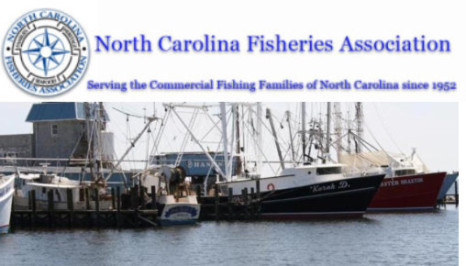
North Carolina Fisheries Association Weekly Update for November 7, 2016
Click here to read the Weekly Update, to read all the updates, Click here 13:07
Always Top Quality! Your Seafreeze Ltd. Preferred Price List for November 7th 2016 Has Arrived!
 Contact our sales team today @ 401 295 2585 or 800 732 273 Click here for the complete price list from Seafreeze Ltd. We are Direct to the Source-We are Fishermen-We are Seafreeze Ltd! Visit our website! 13:01
Contact our sales team today @ 401 295 2585 or 800 732 273 Click here for the complete price list from Seafreeze Ltd. We are Direct to the Source-We are Fishermen-We are Seafreeze Ltd! Visit our website! 13:01
TSB says more needs to be done to ensure safety of commercial fishermen – Maritime Fishermen’s Union responds
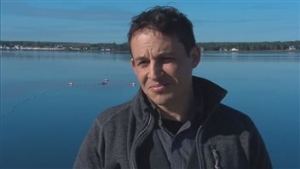 The Maritime Fishermen’s Union is responding to criticism from the Transportation Safety Board that there are still too many fatal fishing accidents every year in Canada. The union says it’s doing its part to try and make the fishing industry safer but points out fishing is a dangerous job and unfortunate things happen. “The reality of this industry is there are many factors that are uncontrollable and unpredictable. That is something we sometimes forget,” said Christian Brun, MFU’s executive secretary. Brun was responding to the recent release of the Transportation Safety Board’s Watchlist 2016 and in particular, the portion on commercial fishing safety that calls for stakeholders, industry and government to act on longstanding recommendations. Read the story here 08:10
The Maritime Fishermen’s Union is responding to criticism from the Transportation Safety Board that there are still too many fatal fishing accidents every year in Canada. The union says it’s doing its part to try and make the fishing industry safer but points out fishing is a dangerous job and unfortunate things happen. “The reality of this industry is there are many factors that are uncontrollable and unpredictable. That is something we sometimes forget,” said Christian Brun, MFU’s executive secretary. Brun was responding to the recent release of the Transportation Safety Board’s Watchlist 2016 and in particular, the portion on commercial fishing safety that calls for stakeholders, industry and government to act on longstanding recommendations. Read the story here 08:10
A proposal intended to curb costly trap wars prompts 2-tag plan for lobster traps
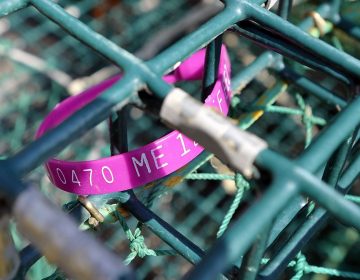 A proposal intended to curb costly trap wars would require Maine lobstermen to put two tags on traps they set outside their licensed fishing territory. Right now, every trap that is set along Maine’s 3,500-mile coast must have at least one tag, which identifies the fisherman who owns it. That 50-cent tag is the primary enforcement tool the Maine Marine Patrol uses to make sure a lobsterman is hauling only his or her own traps. Under state rules, Maine lobstermen can set up to 49 percent of their traps outside of their home fishing zone. In two zones along the coast, where fishermen are competing hardest for prime ocean bottom, lobstermen are already required to put second tags on traps dropped outside their home zone. Now, the Maine Department of Marine Resources wants to extend double-tagging to all seven lobster zones to make it easier to catch lobstermen who are fishing too many traps outside their zone. Read the story here 07:35
A proposal intended to curb costly trap wars would require Maine lobstermen to put two tags on traps they set outside their licensed fishing territory. Right now, every trap that is set along Maine’s 3,500-mile coast must have at least one tag, which identifies the fisherman who owns it. That 50-cent tag is the primary enforcement tool the Maine Marine Patrol uses to make sure a lobsterman is hauling only his or her own traps. Under state rules, Maine lobstermen can set up to 49 percent of their traps outside of their home fishing zone. In two zones along the coast, where fishermen are competing hardest for prime ocean bottom, lobstermen are already required to put second tags on traps dropped outside their home zone. Now, the Maine Department of Marine Resources wants to extend double-tagging to all seven lobster zones to make it easier to catch lobstermen who are fishing too many traps outside their zone. Read the story here 07:35
Coast Guard medevacs man near Houma
 The Coast Guard medevaced a man from the Gulf of Mexico, approximately 23 miles south of Houma, Louisiana, Sunday. Watchstanders at Coast Guard Sector New Orleans received a request 1:50 p.m. from the fishing vessel Michael II for a medevac of a 60-year-old Vietnamese deckhand who was experiencing stroke-like symptoms. Sector New Orleans directed the launch of an MH-65 Dolphin helicopter crew from Coast Guard Air Station New Orleans to assist the man. The crew arrived on scene at 3:57 p.m. and transported the deckhand to Ochsner Medical Center in New Orleans in stable condition. For video of the medevac, please click here. 06:52
The Coast Guard medevaced a man from the Gulf of Mexico, approximately 23 miles south of Houma, Louisiana, Sunday. Watchstanders at Coast Guard Sector New Orleans received a request 1:50 p.m. from the fishing vessel Michael II for a medevac of a 60-year-old Vietnamese deckhand who was experiencing stroke-like symptoms. Sector New Orleans directed the launch of an MH-65 Dolphin helicopter crew from Coast Guard Air Station New Orleans to assist the man. The crew arrived on scene at 3:57 p.m. and transported the deckhand to Ochsner Medical Center in New Orleans in stable condition. For video of the medevac, please click here. 06:52

































